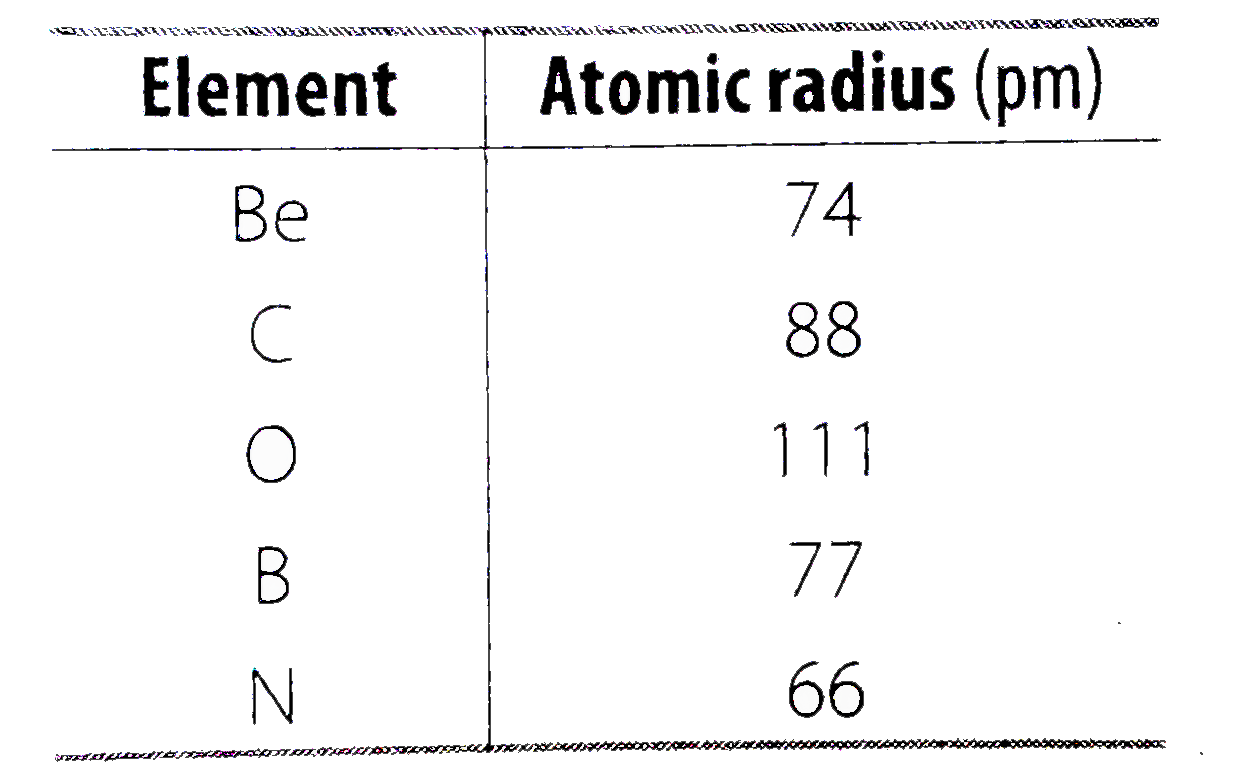In a period if the atomic radius of the first element is 152 pm, what is the atomic radius of the third element-more than or less than 152 pm?
To solve the question regarding the atomic radius of the third element in a period, we can follow these steps:
1. Identify the Given Information:
- The atomic radius of the first element in a period is given as 152 picometers (pm).
2. Understand the Trend in Atomic Radius Across a Period:
- As we move from left to right across a period in the periodic table, the atomic number of the elements increases. This means that more protons are added to the nucleus.
3. Analyze the Effect of Increasing Atomic Number:
- With the addition of protons, the positive charge of the nucleus increases. Electrons are added to the same energy level (or shell), but the increased positive charge leads to a stronger attraction between the nucleus and the outermost electrons.
4. Determine the Change in Atomic Radius:
- The increase in effective nuclear charge (the net positive charge experienced by electrons) results in a decrease in atomic size. Therefore, as we move from the first element to the third element in the same period, the atomic radius decreases.
5. Conclusion:
- Since the atomic radius of the first element is 152 pm, and the atomic radius decreases as we move to the third element, we can conclude that the atomic radius of the third element will be less than 152 pm.
Final Answer:
The atomic radius of the third element is less than 152 pm.
---
- The atomic radius of the first element in a period is given as 152 picometers (pm).
- As we move from left to right across a period in the periodic table, the atomic number of the elements increases. This means that more protons are added to the nucleus.
- With the addition of protons, the positive charge of the nucleus increases. Electrons are added to the same energy level (or shell), but the increased positive charge leads to a stronger attraction between the nucleus and the outermost electrons.
- The increase in effective nuclear charge (the net positive charge experienced by electrons) results in a decrease in atomic size. Therefore, as we move from the first element to the third element in the same period, the atomic radius decreases.
- Since the atomic radius of the first element is 152 pm, and the atomic radius decreases as we move to the third element, we can conclude that the atomic radius of the third element will be less than 152 pm.
The atomic radius of the third element is less than 152 pm.
Topper's Solved these Questions
- PERIODIC PROPERTIES OF ELEMENTS BOOK - ICSECHAPTER - PERIODIC PROPERTIES OF ELEMENTS EXERCISE - QUESTIONS FOR PRACTICE ON EXAMINATION PATTERN (SECTION I)
2 Videos
- PERIODIC PROPERTIES AND VARIATIONS OF PROPERTIES (PHYSICAL AND CHEMICAL) BOOK - ICSECHAPTER - PERIODIC PROPERTIES AND VARIATIONS OF PROPERTIES (PHYSICAL AND CHEMICAL) EXERCISE - Questions from Previous ICSE Board Papers (2018)
5 Videos
- PERIODIC PROPERTIES AND VARIATIONS OF PROPERTIESBOOK - ICSECHAPTER - PERIODIC PROPERTIES AND VARIATIONS OF PROPERTIESEXERCISE - ASSERTION AND REASON BASED QUESTIONS
5 Videos
Similar Questions
Match the correct atomic radius with the element.

View SolutionIn Bohr's model, the atomic radius of the first orbit of Hydrogen atom is r0 then the radius of the third orbit is
View SolutionThe atomic radii of transition elements in a period are.
View SolutionIn group 1 the atomic radius of sodium is greater than the atomic radius of lithium. Give reason.
View SolutionAtomic radius of lithium is greater than the atomic radius of fluorine.Give reason
View SolutionIn halogens (group 17) the atomic radius of chlorine is greater than the atomic radius of fluorine. Give reason.
View SolutionAtomic radius of F is greater than that of Ne.
View SolutionAluminium crystallizes in an fcc structure. Atomic radius of the metal is 125 pm. What is the length of the side of the unit cell of the metal?
View SolutionWhy is the atomic radius of gallium smaller than that of aluminium?
View SolutionThe correct order of increasing atomic radius of the following elements as:
View Solution
